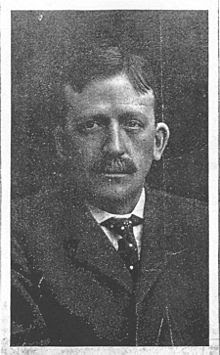Erastus Brainerd was an American journalist and art museum curator. During the Yukon Gold Rush, he was the publicist who “sold the idea that Seattle was the Gateway to Alaska and the only such portal”. He was born on February 25, 1855 in Middletown, Connecticut and attended Phillips Exeter Academy and Harvard University, from which he graduated at the age of 19. He served as curator of engravings at the Boston Museum of Arts, then traveled to Europe, where he promoted a tour for “lecturing showman” W. Irving Bishop. He was a social success in Europe, and became a Knight of the Order of St. John of Jerusalem, a Knight of the Red Cross of Rome, a Knight Templar, and a Freemason.
In July 1890, after recovering from three severe bouts of influenza, he headed west to become editor of the Seattle Press and the Press-Times, a role he held until September 1893. He left to focus on the office of State Land Commissioner, to which he had been appointed March 15, 1893. He joined the Rainier Club and organized a local Harvard Club. In 1897, as secretary and executive officer of the newly founded Bureau of Information of the Seattle Chamber of Commerce, he became the most prominent figure in the publicity campaign that established Seattle’s preeminence as a mercantile and outfitting center for the miners headed to the Yukon. He also convinced the federal government to open an assay office in Seattle. He briefly and unsuccessfully attempted to make a living as a “mining consultant” before becoming editor of the Seattle Post-Intelligencer. He may never have come to Skagway, but he certainly influenced the thousands that did. And so, we dub him a Skagway hero.
Brainerd died on December 25, 1922 in Tacoma, Washington.
Wikipedia; Library of Congress; National Park Service.

